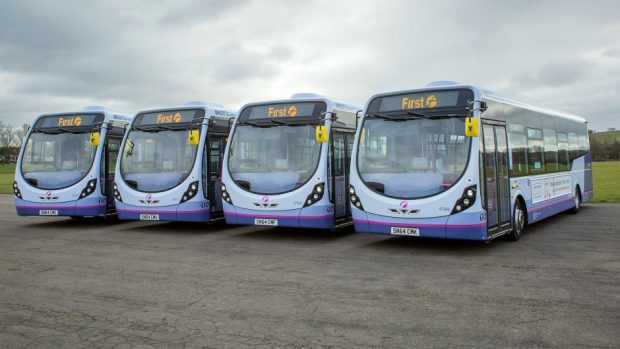Bus manufacturers have road tested their latest products on a FirstGroup “race” track.
The Aberdeen-based transport giant put new “development race” vehicles through their paces at the Millbrook proving ground, a specially designed testing facility in Bedfordshire.
Buses made by manufacturers including Wrightbus, ADL and Optare took part in the latest in a series of annual trials, which FirstGroup said had led to a 30%-plus improvement in fuel efficiency and 30% reduction in carbon emissions since 2012.
Giles Fearnley, managing director at group subsidiary First Bus, described progress over the past four years as “remarkable”.
He added: “In 2012, we laid down the gauntlet to bus manufacturers to drive innovation and deliver vehicles that were cleaner and more fuel-efficient.
“We’re confident that by continuing our partnership approach with Millbrook Proving Ground and our vehicle manufacturers we can deliver a further 10% improvement in fuel efficiency and carbon emissions in 2017.
“We know it makes sound business sense as well as good environmental sense to pioneer the introduction of lower carbon and lower emission technologies.
“As well as making the communities we serve cleaner and greener for the future, we’re seeing great fuel efficiency benefits which are helping us ensure that bus travel remains good value for money for our customers.”
FirstGroup, whose 6,200 buses carry 1.6million passengers every day in 40 of the UK’s largest towns and cities, said improvements to vehicle performance since it started its testing programme had delivered wide-ranging benefits for the whole industry and the environment.
The results of the testing programme play a major part in the company’s bus procurement strategy.
It is investing £70million in 305 new vehicles in this financial year alone, taking the total spend since 2012 to around £300mmillion on nearly 1,600 new buses.
“With multimillion-pound orders at stake, manufacturers have treated the annual trials at Millbrook very seriously,” the firm said.
Buses tested at Millbrook are hooked up to sophisticated equipment to monitor many aspects of performance. They undergo maximum speed and acceleration tests and are subjected to extreme 25% gradients to make sure they meet some of the more demanding requirements of real-world operations.
To replicate the driving pattern of a bus on an average working day, vehicles follow a route featuring hills, junctions, roundabouts and numerous bus stops.
The buses travel at a range of pre-defined speeds and spend a proportion of the test idling to simulate passengers boarding at bus stops, just as it typically would while in service. Vehicles are weighted with ballast to replicate passengers.
